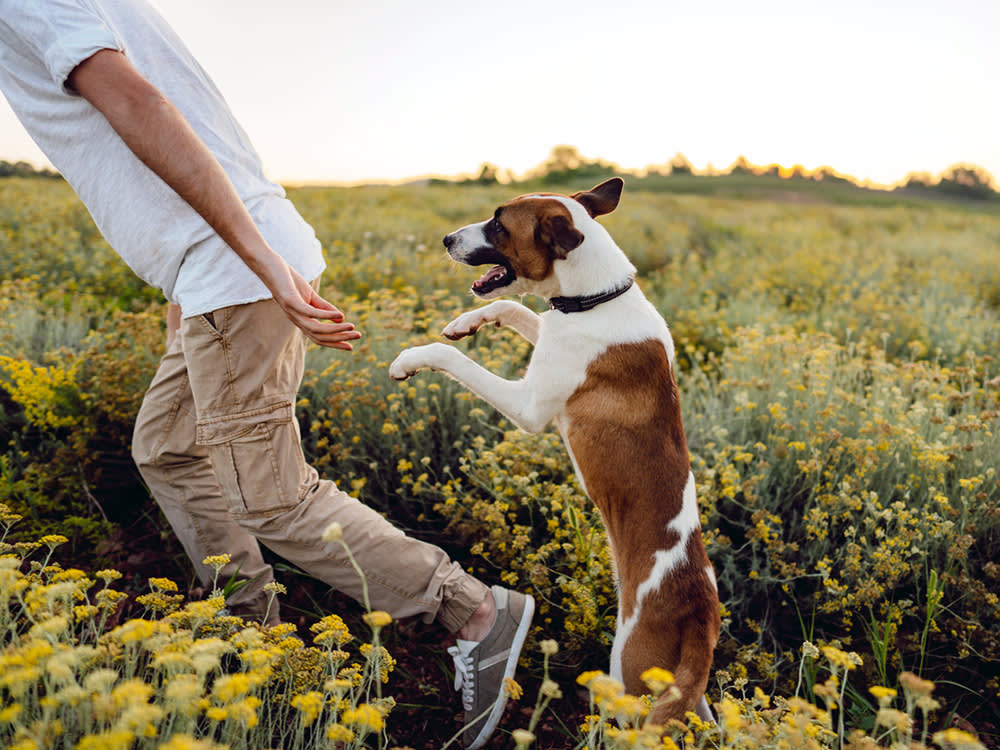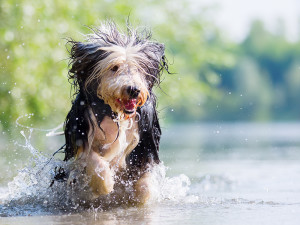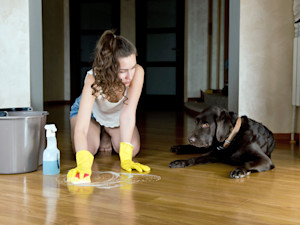5 Ways To Keep Your Pup Safe This Spring
There’s no need to worry, if you know what to look out for

Share Article
As winter gives way to the warmth of spring, pet parents eagerly anticipate the joys of longer days and blooming landscapes. But along with these seasonal perks, spring brings its own set of hazards for our canine friends. From toxic plants to pesky pests, being aware of the potential dangers is crucial for enjoying the season without worry. To ensure your pup stays safe and healthy this spring, here are five essential tips every pet parent should consider.
Daffodils and other spring flowers toxic to dogs
One of the most uplifting aspects of spring (apart from longer evenings) is the flowering of an array of vibrant blooms. However, not all flowers are safe for our canine companions. In fact, some of the most common spring flowers can be toxic to dogs if ingested.

littleKin™ is Kinship’s home just for puppy and kitten parents. Bop over to check out expert advice, new pet tools, and special deals—all curated for your newest family member.
opens in a new tabAmong the major offenders are the popular spring flower, daffodils, as well as tulips, lilies and azaleas, all of which are highly poisonous to dogs according to the Blue Crossopens in a new tab.
Daffodils contain toxic alkaloidsopens in a new tab that can cause vomitingopens in a new tab, diarrhoeaopens in a new tab and even seizures in dogs. Tulips and lilies, particularly popular during Easter celebrationsopens in a new tab, can cause gastrointestinal upset and, in severe cases, kidney failure, and azaleas contain toxins that can lead to symptoms such as vomiting, diarrhoea and drooling.
While the bulbs pose the greatest risk as this is where the toxin concentration is highest, pup parents are strongly advised against allowing the consumption of any part of the flower, even drinking the water from a vase that contained them, Dr Bartley Harrison told Kinship. If you suspect your dog has ingested a toxic plant, contact your veterinarian immediately.
To keep your pup safe, be mindful of the flowers you plant in your garden, bring into your home and watch out for any growing out in the wild on walks. Opt for pet-friendly alternativesopens in a new tab such as roses, marigolds and snapdragons instead.
Allergies
Just like humans, dogs can suffer from seasonal allergies. Spring brings with it pollen from trees, grass and flowers, triggering allergic reactions in sensitive pups. Common symptoms of allergies in dogsopens in a new tab include itching, scratching, sneezing, watery eyes and skin irritation.
To alleviate your dog’s discomfort, keep them away from areas with high pollen counts, such as freshly mowed grass or fields of blooming flowers. Regularly grooming and bathing your pup with a hypoallergenic shampoo to remove pollen from their fur, and wiping down your dog’s paws after outdoor excursions can help reduce their exposure to allergens.
Always consult your vet for allergy management options if you are struggling to keep symptoms at bay, where they may be able to help with antihistamines or other medication.
Daylight Saving Time
The arrival of spring also means the clocks go forward, marking the start of Daylight Saving Time. While longer days mean more time for outdoor adventures with your pup, the sudden change in schedule can also disrupt your dog’s internal clock, which can lead to confusion and stress.
To help your dog adjust to the time changeopens in a new tab, don’t immediately get them up an hour earlier, or suddenly change their mealtimes. Behaviourist Karen B London suggests gradually shifting their feedingopens in a new tab and walking schedule by 10–15 minutes each day leading up to Daylight Saving Time.
Provide plenty of mental and physical stimulation during the transition periodopens in a new tab to prevent boredom and anxiety. And don’t forget to update your dog’s ID tags and microchip information with your current contact details in case they wander off during those late evening walks.
Fleas and ticks
Warmer temperatures bring out not only flowers but also unwelcome pests such as fleas and ticks. These tiny parasites thrive in spring and can pose serious health risks to your dog, including transmitting diseases such as Lyme diseaseopens in a new tab.
Common clinical signs associated with Lyme disease infection include mild fever, lethargy and discomfort. “If left untreated, Lyme disease can cause heart complications, joint disease and permanent nervous system damage in dogs,” says Dr Kristopher S Sharpe. If you suspect your pup has been bitten by a tick or could have Lyme disease, contact your vet immediately.
Preventative measures are key to keeping your pup protected. Invest in a quality flea and tick prevention product recommended by your veterinarian, and keep your pup’s areas such as bedding and blankets clean.
Regularly check your dog for any signs of infestation, such as excessive scratching or visible parasites, especially after outdoor excursions. You could also consider landscaping your garden to minimise ticks at home, and avoid walking your dog in areas with tall grasses or dense vegetation where ticks thrive.
Outdoor hazards
As the weather warms up, dogs are eager to spend more time outdoors exploring and playing. However, the great outdoors can harbour various hazards, from poisonous plants to bacterial infections.
If you have one, give your garden a thorough inspection for anything that may have cropped up over the winter, such as toxic plants, debris or openings in fences. Be sure to keep hazardous chemicals such as fertilisers, pesticides and herbicides securely locked away from your pup’s reach, but also be mindful that these substances might be used in public areas such as parks, too.
When venturing to parks or outdoor trails, be aware of what the use of these chemicals might look like (you see someone using them, smell it, see a notice, perhaps) and keep your dog on a lead if you notice anything.
With warmer temperatures, your pup might be veering towards any leftover puddles from winter, which can be a breeding ground for bacteria that just love pup tummies, such as Giardiaopens in a new tab, Leptospirosisopens in a new tab and Pseudomonasopens in a new tab. “Leptospira bacteria can survive and thrive for up to 180 days given the right conditions; namely, warm, damp environments and stagnant water,” says Dr Shea Cox, so that in between period of spring is the perfect breeding ground. Steer them away from drinking any puddle water, and always supervise your pup when they’re in deeper water, beware of the deadly (but uncommon) symptoms of water intoxicationopens in a new tab in dogs.
References:

Orla Pentelow
Orla Pentelow is Kinship UK’s Senior Editor. She has previously written for British Vogue, Bustle, Yahoo and The Telegraph. When not at her desk liking dog videos she’s out and about with her rescue pup, Luna, who works primarily as chief distractor.
Related articles
![Woman with brown hair on hand and knees with yellow cleaning gloves on, cleaning the floor whilst a black Labrador watches on]() opens in a new tab
opens in a new tabPet-Safe Cleaning Products
Because we have to look after the four-legged family members, too
![Cute weimaraner dog lying on lawn and scratching its back]() opens in a new tab
opens in a new tab5 of the Best Ways to Solve Your Dog’s Allergies
Here’s what works (and what doesn’t)
![Dog Looking Away Against Sky]() opens in a new tab
opens in a new tabDo Hypoallergenic Dogs Really Exist?
Vet Dr Shea Cox separates fact from fiction when it comes to low-shedding breeds
![Black puppy itches behind her ear due to flea allergy]() opens in a new tab
opens in a new tabShoo, Flea: What to Do About Your Dog’s Flea Allergy
Before you say “ew David” Moira Rose-style, learn these steps to prevent and remove fleas
![Woman holding a beagle in warm dappled summer light]() opens in a new tab
opens in a new tabYou’ve Got a Summer-Lovin’ Pup. Here’s How to Keep Them Safe
Some like it hot (but not most dogs). Here are the season’s health hazards, from fleas to grass seeds







